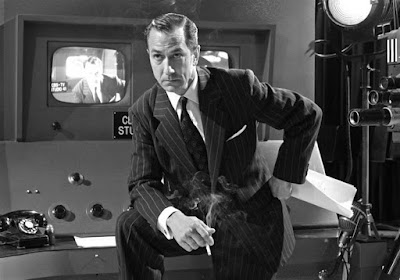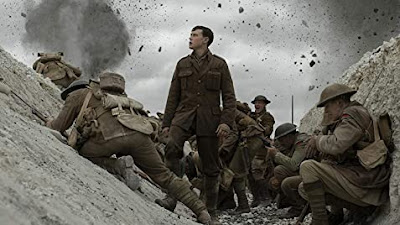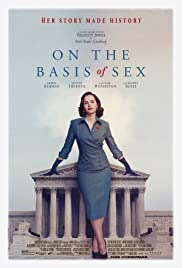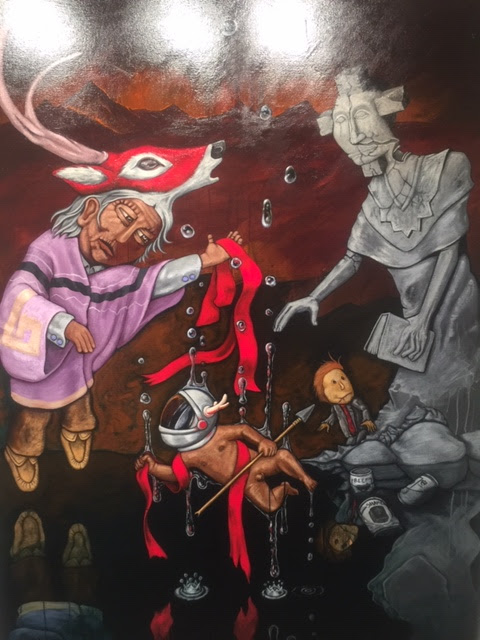Last weekend I picked up
Good Night, And Good Luck for 50 cents at a rummage sale. David Strathairn as Edward R. Murrow is uncanny. And 50 cents for a great film is a steal.
If you recall, the film begins with Strathairn as Murrow addressing a black tie media event in mid-October 1958. The actual speech he delivered is much longer than what we hear in the film, so I thought it worthwhile to find it online and share it.
Murrow, as a journalist, came to national prominence through his radio coverage of World War II, doing live broadcasts from Europe for CBS. He was a noted pioneer in the medium of radio and television. He was committed to the highest ideals of journalism and believed in its importance, and the importance of integrity. His courage in confronting Senator Joseph McCarthy resulted in events that led to McCarthy's censure by the Senate.
The film has a stellar cast, including Jeff Daniels, Robert Downey Jr., Patricia Clarkson, George Clooney and Frank Langella as William Paley, head of CBS. Langella is always at home in these roles, playing people with weight. I think here of the film Dave.
Sig Mickelson (Jeff Daniels) introduces Murrow who takes the podium and, with appropriate gravity, addresses the leading members of the journalism profession.
This just might do nobody any good. At the end of this discourse a few people may accuse this reporter of fouling his own comfortable nest, and your organization may be accused of having given hospitality to heretical and even dangerous thoughts. But I am persuaded that the elaborate structure of networks, advertising agencies and sponsors will not be shaken or altered. It is my desire, if not my duty, to try to talk to you journeymen with some candor about what is happening to radio and television in this generous and capacious land. I have no technical advice or counsel to offer those of you who labor in this vineyard the one that produces words and pictures. You will, I am sure, forgive me for not telling you that the instruments with which you work are miraculous, that your responsibility is unprecedented or that your aspirations are frequently frustrated. It is not necessary to remind you of the fact that your voice, amplified to the degree where it reaches from one end of the country to the other, does not confer upon you greater wisdom than when your voice reached only from one end of the bar to the other. All of these things you know.
You should also know at the outset that, in the manner of witnesses before Congressional committees, I appear here voluntarily-by invitation-that I am an employee of the Columbia Broadcasting System, that I am neither an officer nor any longer a director of that corporation and that these remarks are strictly of a "do-it-yourself" nature. If what I have to say is responsible, then I alone am responsible for the saying of it. Seeking neither approbation from my employers, nor new sponsors, nor acclaim from the critics of radio and television, I cannot very well be disappointed. Believing that potentially the commercial system of broadcasting as practiced in this country is the best and freest yet devised, I have decided to express my concern about what I believe to be happening to radio and television. These instruments have been good to me beyond my due. There exists in mind no reasonable grounds for any kind of personal complaint. I have no feud, either with my employers, any sponsors, or with the professional critics of radio and television. But I am seized with an abiding fear regarding what these two instruments are doing to our society, our culture and our heritage.
When he says, "These instruments have been good to me beyond my due," he is referring to the media of radio and television. "Beyond my due" may be referencing the expectations life may have had for him as an infant born on Polecat Creek, North Carolina, in a log cabin with no electricity or running water.
Further on he says:
This nation is now in competition with malignant forces of evil who are using every instrument at their command to empty the minds of their subjects and fill those minds with slogans, determination and faith in the future. If we go on as we are, we are protecting the mind of the American public from any real contact with the menacing world that squeezes in upon us. We are engaged in a great experiment to discover whether a free public opinion can devise and direct methods of managing the affairs of the nation. We may fail. But in terms of information, we are handicapping ourselves needlessly.Remember, this is post-McCarthyism 1958.
I began by saying that our history will be what we make it. If we go on as we are, then history will take its revenge, and retribution will not limp in catching up with us.
In his second-to-last paragraph we have a summing up, and the reference from which the speech took its title.
This instrument can teach, it can illuminate; yes, and even it can inspire. But it can do so only to the extent that humans are determined to use it to those ends. Otherwise, it's nothing but wires and lights in a box. There is a great and perhaps decisive battle to be fought against ignorance, intolerance and indifference. This weapon of television could be useful.
* * * *
In the final paragraph he cites a quote from General Stonewall Jackson. In light of recent events, would his advisors have encouraged him to use a quote from a more politically correct source?
I strongly encourage anyone, especially those working in the journalism profession, to read the full transcript of Murrow's "Wires and Lights in a Box" speech.
* * * *
Trivia: The R in Edward R. Murrow's name is for Roscoe, which was my grandfather's name. Both were born in the first decade of the last century, so it initially made me wonder what famous Roscoe they were named after at the time. Further reading led me to discover he was named after his father.
























































